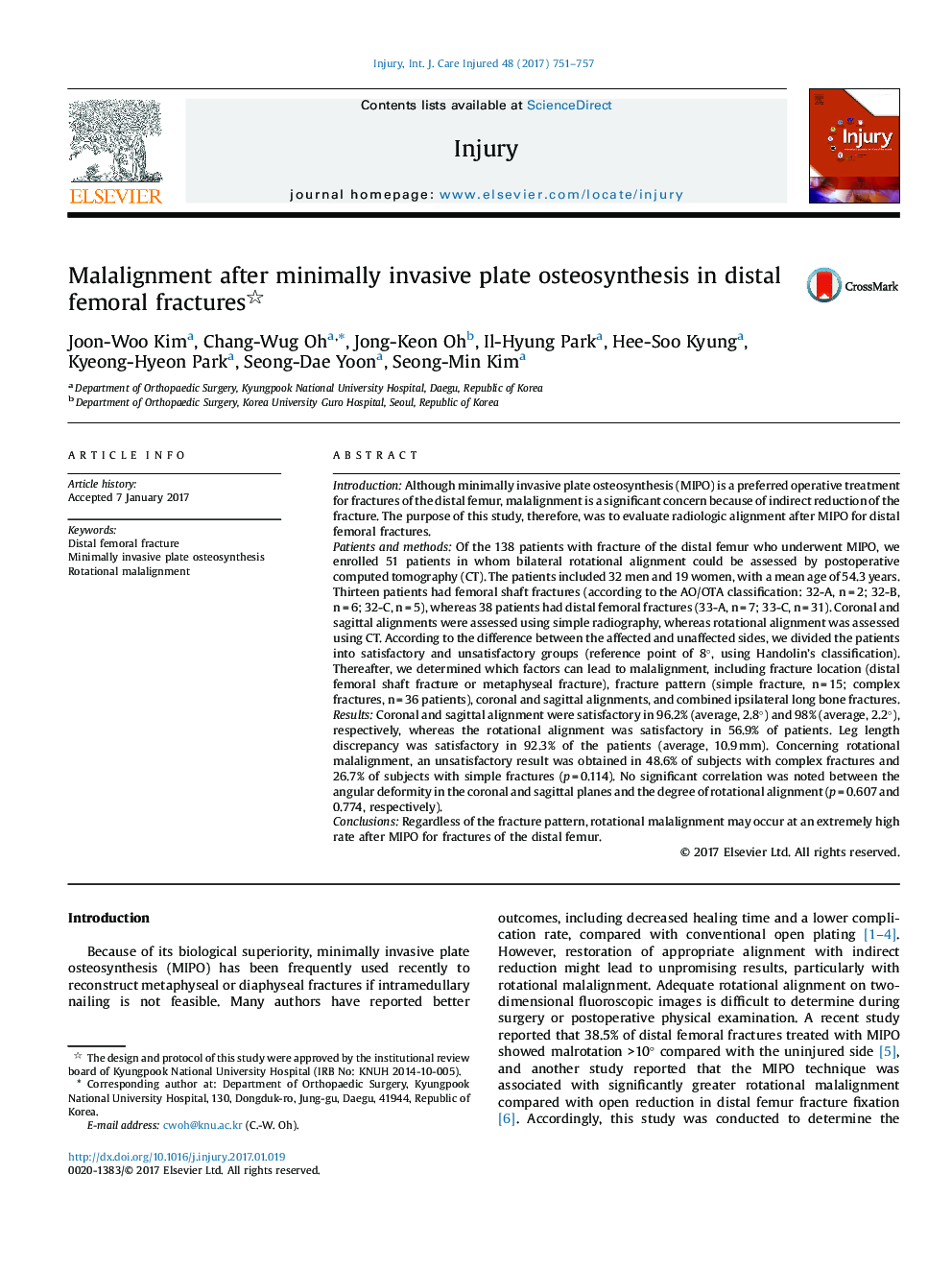| کد مقاله | کد نشریه | سال انتشار | مقاله انگلیسی | نسخه تمام متن |
|---|---|---|---|---|
| 5652672 | 1407223 | 2017 | 7 صفحه PDF | دانلود رایگان |

IntroductionAlthough minimally invasive plate osteosynthesis (MIPO) is a preferred operative treatment for fractures of the distal femur, malalignment is a significant concern because of indirect reduction of the fracture. The purpose of this study, therefore, was to evaluate radiologic alignment after MIPO for distal femoral fractures.Patients and methodsOf the 138 patients with fracture of the distal femur who underwent MIPO, we enrolled 51 patients in whom bilateral rotational alignment could be assessed by postoperative computed tomography (CT). The patients included 32 men and 19 women, with a mean age of 54.3 years. Thirteen patients had femoral shaft fractures (according to the AO/OTA classification: 32-A, n = 2; 32-B, n = 6; 32-C, n = 5), whereas 38 patients had distal femoral fractures (33-A, n = 7; 33-C, n = 31). Coronal and sagittal alignments were assessed using simple radiography, whereas rotational alignment was assessed using CT. According to the difference between the affected and unaffected sides, we divided the patients into satisfactory and unsatisfactory groups (reference point of 8°, using Handolin's classification). Thereafter, we determined which factors can lead to malalignment, including fracture location (distal femoral shaft fracture or metaphyseal fracture), fracture pattern (simple fracture, n = 15; complex fractures, n = 36 patients), coronal and sagittal alignments, and combined ipsilateral long bone fractures.ResultsCoronal and sagittal alignment were satisfactory in 96.2% (average, 2.8°) and 98% (average, 2.2°), respectively, whereas the rotational alignment was satisfactory in 56.9% of patients. Leg length discrepancy was satisfactory in 92.3% of the patients (average, 10.9 mm). Concerning rotational malalignment, an unsatisfactory result was obtained in 48.6% of subjects with complex fractures and 26.7% of subjects with simple fractures (p = 0.114). No significant correlation was noted between the angular deformity in the coronal and sagittal planes and the degree of rotational alignment (p = 0.607 and 0.774, respectively).ConclusionsRegardless of the fracture pattern, rotational malalignment may occur at an extremely high rate after MIPO for fractures of the distal femur.
Journal: Injury - Volume 48, Issue 3, March 2017, Pages 751-757